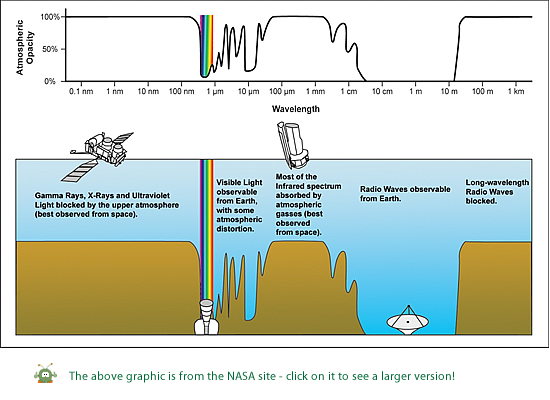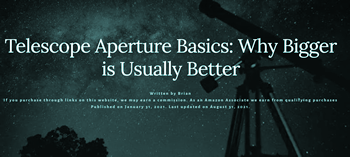Telescopes A telescope is a scientific instrument designed to collect electromagnetic radiation. This data is then analysed so that we can find out more about distant objects. Back in the 1600s the only type of electromagnetic radiation we could use to find out about the stars was visible light. Nowadays we use virtually all of the parts of the spectrum to gather information about distant objects. The atmosphere absorbs some parts of the electromagnetic spectrum better than others - there is no pattern to it - see the graph above. Whether a photon of electromagnetic energy is abosorbed or not depends on the energy levels of electrons within the atoms that make up the atmosphere - but that is A level Physics - so don't worry about it! At GCSE level you just have to remember that some gets through - and some doesn't. Microwave radiation gets through - that is why we use it to communicate with satellites - radio waves don't. Look carefully at the graph... those rays that do not get through easily will have to be observed from high up in the atmosphere - preferably on a cloudless day... or from an orbiting satellite. Links to useful sites for background reading: |
Follow me...
|








